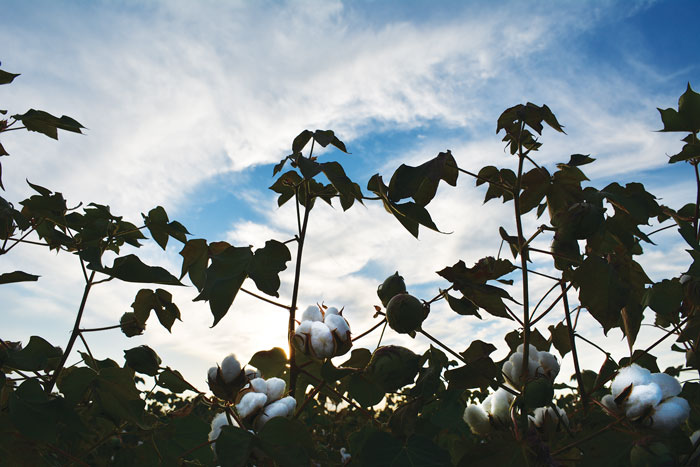
Achieving ideal soil fertility levels for efficient cotton production takes more than a prescription approach based on what has always worked. With increased cost for primary nutrients, farmers can ill afford to apply more fertilizer than they need — but they also can’t scrimp on what’s required to produce profitable yields.
“Only apply the nutrients needed for a specific farm or field,” advises Randy Boman, resident director, Oklahoma State University Southwest Research and Extension Center in Altus, and state Extension cotton leader. “And check the soil for residual nitrates,” he told participants at the West Texas Agricultural Chemical Institute annual conference.
It goes back to what Extension has preached for years: take soil samples and fertilize accordingly. Too little nitrogen and other essential nutrients will result in reduced yield and lower fiber quality.
For the latest on southwest agriculture, please check out Southwest Farm Press Daily and receive the latest news right to your inbox.
Too much nutrient, especially nitrogen, also creates problems and adds unnecessary production expenses, Boman says. “Excess nitrogen may increase Verticillium wilt disease.”Too much nitrogen also may flare aphid populations and increase the need for plant growth regulator applications. It can delay maturity and limit harvest aid performance.
“Excess nitrogen also will ultimately affect fiber quality — micronaire, for instance — which could result in cotton production losses, or extremely high expenses, or both.” Too much nitrogen also may affect forage sorghum production, and during extreme drought could result in high nitrates in harvested forage.
Nitrogen Deficiency Symptoms
Producers should be aware of nitrogen deficiency symptoms, including pale, yellowish green older leaves (chlorosis); leaves reduced in size, lack of vigor; and stunted plant growth, identified by small, short petioles. Red pigment is another nitrogen deficiency symptom.
Cotton farmers should be aware of cotton nitrogen demand, which can be as much as 2 pounds to 4 pounds per day during mid boll uptake. “Approximately 20 percent of seasonal needs should be applied pre-bloom,” Boman advises. “The remainder of nitrogen fertilizer demand should be supplied during boll development. Soil nitrogen should be depleted as bolls begin to open in order to avoid delayed maturity.”
Placement is also important. “Nitrogen is mobile in the soil,” Boman says, “so placement is not as critical as it is for potassium. But keep fertilizer bands out of the seed zone. Salts may increase osmotic potential and cause seedling vigor problems, especially during periods of environmental stress.”
He does not recommend placing nitrogen in-furrow.
Drought also affects nitrogen uptake. “Poor crop rooting and low yields generally result in residual nitrogen in the soil if fertilizer was applied. Residual nitrogen also may be result from unused mineralized nitrogen.”
Sample and test
Soil sampling provides the answers, he says. “Sample and test soil to determine the amount of residual and credit nitrate nitrogen in the soil against the nitrogen requirement. Subsoil sampling can be important.”
There is a “soil test critical level,” a breaking point that dictates fertilizer need, Boman says. “Below the critical level indicates a likelihood of obtaining a response to application of the nutrient. As the actual concentration nears the critical level, the likelihood of a response decreases. Above the critical level indicates that the likelihood of obtaining a response to fertilizer application is low.” Determining that critical level, and assessing amount and availability of residual fertilizer, may require deep soil sampling.
Residual nitrogen may be a valuable resource; Boman says soil surveys show the value. “The range of residual nitrate nitrogen found in fields was 57 pounds to 266 pounds per acre. Most fields with extremely high residual nitrogen had experienced no biomass removal since 2010. Other fields had some level of biomass removal (low-yielding forage production, and harvest/baling) and somewhat lower values.”
Residual Nitrogen Values
The average field surveyed was 111 acres, with an average of 151 pounds of nitrate nitrogen per acre across all fields. “In the 24 fields surveyed, a total of 417, 445 pounds of nitrate nitrogen was directly measured. When using 32-0-0, priced at $350 per ton (57 cents per pound of actual nitrogen), the survey indicated the total value of residual nitrogen was $237,944.”
That averages out to about $89 per acre across sampled fields. “The average per field total value of residual nitrogen was $9,914.”
Deep sampling — well below the typical 6-inch depth — may be necessary to discover residual nitrogen, Boman says. “A hydraulic sampler may be necessary to punch holes to get as much as two feet deep.”
Some irrigation water also provides significant amounts of nitrogen, he notes. “Producers should test irrigation water for nitrate nitrogen content, and should credit the nitrogen against requirements for crop production. One acre-foot of 10 parts per million nitrate nitrogen irrigation water supplies 27 pounds of nitrogen per acre.”
Potassium is another important nutrient for cotton. “Bolls are a major sink for potassium,” Boman says. “Uptake may peak at as much as 3 pounds to 4 pounds of potassium oxide (K2O) per acre per day during boll development. About 70 percent of potassium uptake occurs after first bloom.”
Boman says potassium is an important nutrient for fiber quality, including micronaire, and strength. “It also increases water use efficiency.”
Cotton farmers face the dilemma of balancing increasing production costs against lower cotton prices and looking for ways to decrease inputs without reducing profit potential. Taking a hard look at fertility — especially assessing residual nitrogen levels and availability in irrigation water — could provide significant savings, while improving potential for yield and fiber quality.
The old school practice of routine soil samples, with a new wrinkle of irrigation water testing, could be game changers.
About the Author(s)
You May Also Like






